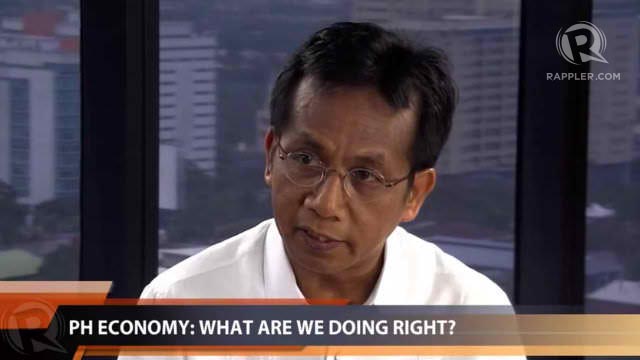SUMMARY
This is AI generated summarization, which may have errors. For context, always refer to the full article.

MANILA, Philippines – After the Philippines posted its strongest growth under the Aquino administration, the National Economic and Development Authority (NEDA) said the country cannot waste time resting on its laurels.
In an interview with Rappler CEO Maria Ressa on Friday, May 31, Socioeconomic Planning Secretary Arsenio Balisacan said the first-quarter 7.8% economic growth will have a greater impact on the lives of Filipinos if it is sustained over a long period.
Balisacan added that the growth should also be driven mainly by the industry sector, particularly manufacturing and construction, to generate the jobs that Filipinos need.
The industry sector, in turn, should be driven by increased and sustained flow of domestic and foreign investments. The Philippines’ foreign direct investments amounted to only $2 billion in 2012, while neighbors had more than 5 times the amount.
“The domestic economy is so much awash with cash. People who have cash are parking their money in SDA, special deposit account, instead of putting it in physical plants and equipment which draw in employment. What we hope is that because of this business confidence, and the good fundamentals of the country, all this money sitting there could, eventually, become physical investments rather than financial investments so we can create jobs. In the end, it’s really investment that paces the employment generation. If investment does not grow, so will employment creation,” Balisacan said.
Watch the interview with Balisacan below:
Age of industrialization
Balisacan said the growth of the Philippine economy in the first quarter is a start and a good indication that the Philippines is finally entering an age of industrialization.
But he said before the country can fully embrace this, it must be able to revive manufacturing, boost tourism growth, and increase productivity in agriculture, where 2/3 of the poor and 1/3 of the labor force belong.
“Because we are at the early stages of our growth process, these things won’t happen overnight. Structural transformation is a long-term process but what we would really want to see is, you talk about tipping point, once you are there, you continue, that’s the big challenge.”
One of the ways to continue on this path is increasing investment growth in the medium term. He said the country was able to significantly increase investments in the past two years, but this is not enough.
In 2011, investment growth was above 40% mainly because of low base effects. The NEDA chief said this pace of growth must be sustained in the next 5 to 10 years if the Philippines wants to catch up with its neighbors.
Balisacan said a steady but increasing pace of growth is also what the government wants to achieve. This will break the country’s boom and bust cycle, giving investors the right economic environment to do business in.
“That (boom and bust) cycle does not give you a good degree of confidence from an outsider’s point of view. So we want to ensure that the pattern we’re seeing will continue. And I think if we succeed in keeping the momentum even beyond 2016, the country should be able to join the likes of Thailand and Malaysia,” Balisacan said.
“If we succeed in sustaining the growth of industry we achieved in the first quarter, that would change the structure of the economy,” he added.
To make a structural change in the economy means changing the key drivers of growth.
In the case of the Philippines, the country’s growth was driven mainly by consumption fueled by overseas Filipino worker remittances. – Rappler.com
Add a comment
How does this make you feel?
There are no comments yet. Add your comment to start the conversation.